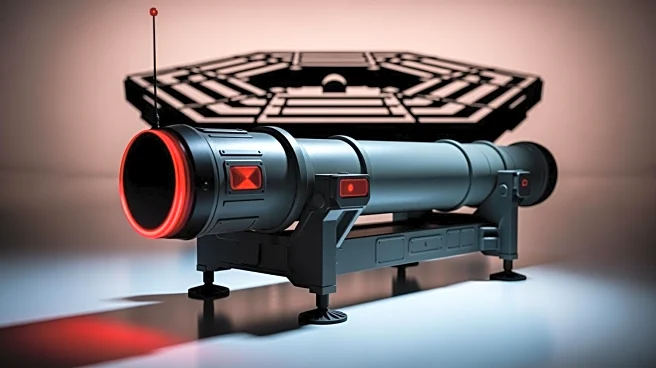What's Happening?
The Pentagon has expressed concerns over the portrayal of the U.S. missile defense system in Kathryn Bigelow's new film, 'A House of Dynamite.' The movie depicts a scenario where U.S. ground-based interceptors
(GBIs) fail to intercept a missile, suggesting a 61% success rate. This portrayal has prompted the Missile Defense Agency (MDA) to issue internal memos to prepare for potential discussions on the topic. The MDA claims that the current interceptors have a 100% success rate in tests over the past decade, a figure that has been met with skepticism by experts. The film's depiction contrasts with the MDA's assertion, raising questions about the accuracy and reliability of the missile defense system.
Why It's Important?
The portrayal of the missile defense system in 'A House of Dynamite' has significant implications for public perception and policy discussions. The film's suggestion of a 61% success rate could influence public opinion and political discourse, potentially affecting funding and strategic decisions. The MDA's claim of 100% accuracy is crucial for maintaining confidence in national defense capabilities, especially in light of potential threats. The discrepancy between the film's depiction and the MDA's claims highlights the challenges in communicating complex defense capabilities to the public and policymakers. This issue is particularly relevant as the U.S. continues to invest in missile defense systems amid evolving global threats.
What's Next?
The Pentagon may continue to address public and political concerns regarding the missile defense system's effectiveness. Discussions around funding and development of missile defense technologies could be influenced by the film's portrayal and subsequent public reaction. The MDA might engage in further public relations efforts to clarify the capabilities and limitations of the current system. Additionally, policymakers may scrutinize the data and testing methods used to support the MDA's claims, potentially leading to calls for more transparency and accountability in defense spending and strategy.
Beyond the Headlines
The film's depiction of the missile defense system raises broader questions about the portrayal of military capabilities in media and its impact on public perception. The tension between artistic expression and factual accuracy in films about national security can influence public understanding and policy debates. This case also underscores the importance of critical media literacy, as audiences must navigate between fictional narratives and real-world implications. The ongoing dialogue between the entertainment industry and defense agencies highlights the complex relationship between storytelling and national security.











